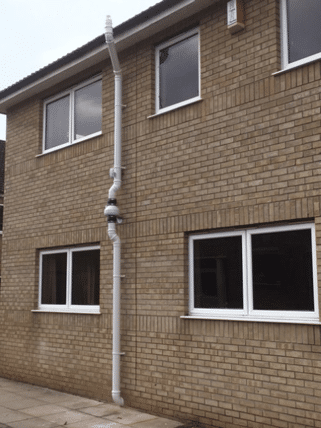Radon can be a threat to your health. In the UK alone radon is responsible for over 1000 lung cancer deaths each year (Source: https://www.ukhsa-protectionservices.org.uk/radon/information/risks) so it is important that you know whether your property is affected.
Two common questions that we are asked regarding radon are how it can be detected, and what the signs are that radon could be present within a property.
Can You Detect Radon Without Instruments?
Radon is a colourless, odourless, tasteless gas that humans cannot detect. All buildings contain some radon, however there is no way of knowing how much without conducting a specific test.
Check Your Conveyancing Documents and Surveys
When you initially purchased your property, the property and the land it has been constructed on will have been subjected to a series of local area searches. Normally, this means that you will have been presented with a list of local concerns you need to be aware of, as well as issues your property is free of. This often includes sections on flooding, mining and contaminated land.
One of these searches deals directly with the likelihood of radon in the area that you are purchasing in. Your report will state that the property is in an area where a certain percentage of homes are estimated to be at risk from radon. If this is less than 1%, the area is not designated as a ‘radon affected area’, however, radon testing is advised for any properties located in risk bands from 1-3% probability upwards.
You will also have received a copy of the TA6 Property Information Form, that is completed by the vendors. The vendors will have disclosed whether any testing has been carried out previously and/or whether any remedial works have taken place.
Check the Radon Map
The interactive radon map produced by UK Health Security Agency and British Geological Survey is a useful tool to assess the likelihood of a property in any given area being affected by radon.
The map has been put together using a combination of geological data and historical radon test results to provide an estimate as to the probability of a home containing high radon levels.
It is important to note that the map is not definitive and that the only way to know for certain whether an individual property is affected or not is to carry out a radon test.
Testing Your Property for Radon
Whilst radon maps can provide an indication as to the likelihood of a property in any given area containing high levels of radon, the only way to know for certain is to carry out a test.
Testing is easy and affordable, with both long term and shorter term tests available.
As radon levels fluctuate constantly, the most reliable result is obtained from a test carried out over a period of three months or longer. This will provide an average, smoothing out any peaks or troughs caused by particular weather events or temporary changes to the use or ventilation of the property (for example, being away on holiday for a week).
The cheapest test kits are passive radon detectors, which can be posted directly to you with instructions for use. The detectors simply need to be placed according to the instructions and returned for laboratory analysis at the end of the test period.
10-day screening tests using passive detectors work in the same way, however, you are only getting a ‘snapshot’ of what the radon concentration was during that particular time period.
A laboratory report will be emailed to you containing the radon results and recommendations as to whether any further action is required.
For those clients who prefer ‘real time’ information, we stock various digital radon monitors that provide continuous monitoring and results without the need for laboratory analysis. As with the passive radon detectors, the longer the test period, the more reliable the result is.
Mitigating Radon in Your Home
If you discover that you have elevated radon levels in your home, then it’s time to investigate radon mitigation options to reduce concentrations.
Here at PropertECO, we can provide a tailored recommendation on how to best manage the radon levels in your property following the results of a full radon design survey.
Our technicians are well experienced at installing radon mitigation methods in a wide variety of different properties. Radon sumps and positive input ventilation are both popular, tried and tested methods of reducing indoor radon levels.
Don’t Ignore Symptoms
Lung cancer can affect anybody with lungs, not only smokers.
Radon is the leading cause of lung cancer in non-smokers, and is a contributory factor of the disease in smokers and ex-smokers.
If you have noticed that you or any member of your household has developed symptoms of lung cancer, such as a persistent cough, chest pains or a shortness of breath, you should contact your GP urgently.
If you would like to find out more about radon testing or mitigation, please get in touch with us today on 0800 046 6193 or contact our team online.

